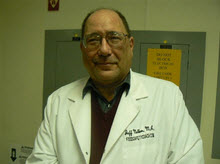Looking back over the years, I find it somewhat of a paradox that restaurant owners are forever telling me that they don't have to worry about the temperature of their refrigerators and freezers during the night. They say the food in these boxes will maintain a safe temperature until they come into work the following morning, while at the same time, pay lip service to the importance of food safety and temperature monitoring.
My experience has shown me that it is very difficult to run a casino restaurant without having adequate temperature monitoring of the cold boxes used to preserve the food that will be served to the public. I find it equally difficult to expect a walk-in or reach-in refrigerator to keep temperatures of the food below 41 F for longer than four hours. The fact of the matter is, without actually monitoring the temperature of these units on a 24/7 basis, in the aftermath of a refrigeration failure, you will never know how long the temperature was out of specifications and whether or not the food safe to use.
When a restaurateur tells me that he/she "never" has refrigeration problems, I often times have to remind them that there are countless problems that can pop up at any time. For example, a southern California restaurant had a very unusual event with a reach-in refrigeration unit beneath the grill. The evening chef opened the drawer, uncovered a dish of salmon that was sealed with plastic wrap, removed a slice of fish, thought he had securely replaced the plastic wrap over the dish and went about his business. Several hours later when everyone was at home, the grill refrigerator went into alarm because the temperature had shot up to 59 F. The plastic wrap had been sucked into the air intake of the refrigerator blower, blocking the flow of refrigerated air. The chef had done this a thousand times or more, but this was the day that things just simply went wrong. Fortunately for the restaurant, they had a 24/7 temperature monitoring system and the protein was saved.
Often times, refrigeration units fail because the compressor overloads the electrical circuit and pops an electrical breaker servicing the unit. Another common event is having the coils freeze over, preventing the flow of cold air into the unit. Finally, the most common problem is simply not closing the door to the refrigerator, thus allowing the internal temperature to rise.
Finally, all complaints to the Health Department require an equipment status report. A HACCP monitoring service will capture and retain all information, including deviation reports regarding the primary food units. The inventory value ranges between $5,000 and $30,000 in most casino walk-ins. Your best investment for 2012 will be a monitoring service that informs you that your refrigeration system is down and no one knows it. Risk reduction can go a long way to saving the casino from product loss.
Temperature monitoring and food safety go hand and hand. Simply put, you cannot have one without the other.
Jeff Nelken, MA, retired RD is a Food Safety / HACCP Expert with 35 years experience in the hospitality industry. He specializes in Food Safety, Accident Prevention, Inspections, Audits and Training. Mr. Nelken is a certified trainer and provider with the Los Angeles Health Department who has worked with CNN, FOX, CBS, NBC, INSIDE EDITION, and Dateline MSNBC's investigation team, as well as Restaurants, Casinos, Schools, Supermarkets, and Food Manufacturers to provide food safety.
©Copyright - All Rights Reserved
DO NOT REPRODUCE WITHOUT WRITTEN PERMISSION BY AUTHOR.









